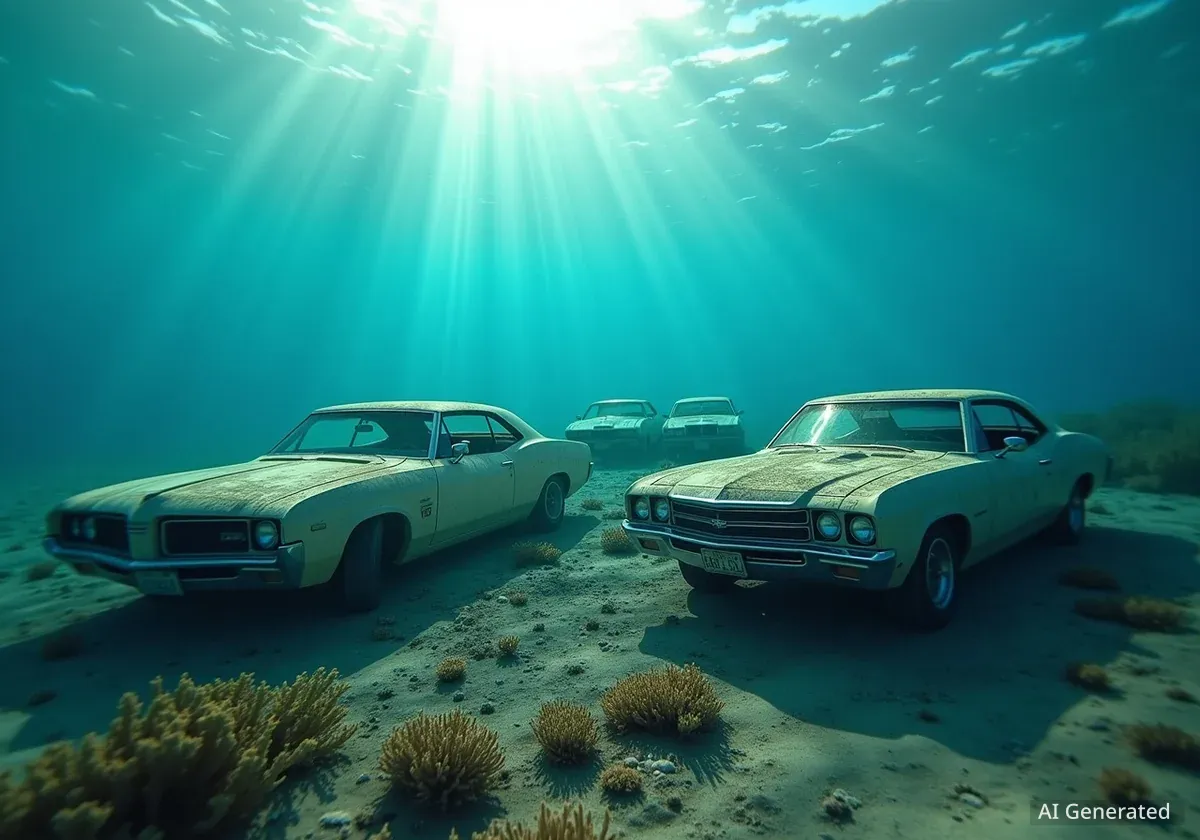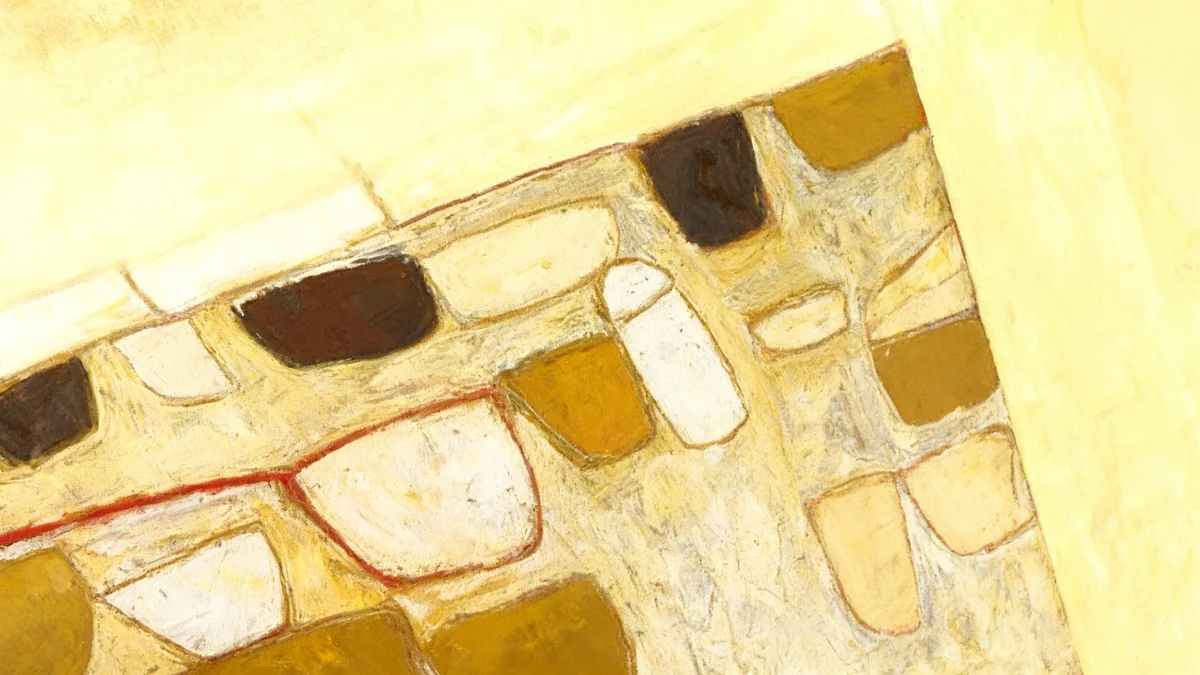Off the coast of Miami Beach, an innovative project has placed twenty-two cars on the ocean floor. This initiative, named "Concrete Coral," combines art and environmental restoration. It uses specially designed marine concrete sculptures to foster the growth of new coral reefs, aiming to combat the effects of climate change on marine ecosystems.
Key Takeaways
- Twenty-two cars are submerged as part of an art and ecology project.
- Artist Leandro Erlich created the installation to highlight climate change impacts.
- The sculptures are made from eco-friendly marine concrete to support coral growth.
- The site will become a snorkeling trail, with more art planned by 2026.
Art Meets Ocean Conservation in Miami
The ReefLine, a nonprofit organization, partnered with artist Leandro Erlich for this unique installation. The project aims to regenerate a vital part of the world's third-largest coral reef system. By transforming discarded vehicles into living art, the initiative draws attention to human environmental impact while providing a practical solution for marine life.
Erlich's work, known for exploring human interaction with the environment, continues this theme underwater. His previous project, "Order of Importance" in 2019, featured car and truck sculptures partially buried in sand. This depicted traffic jams and their link to climate change, with vehicles appearing to sink into rising sea levels.
The new underwater installation extends this powerful message. It prompts viewers to consider the long-term consequences of automobile reliance. The cars, now ocean sculptures, serve as both a memorial and a call for action. They challenge us to rethink our environmental footprint. This project shows how art can inspire change and promote sustainable practices.
"This blend of creativity and ecological purpose aims to reverse the adverse effects of climate change on marine life," according to The ReefLine's project description, highlighting the dual goal of the installation.
Quick Fact
The world's third-largest coral reef system, located off Miami Beach, has experienced significant damage due to climate change. Projects like "Concrete Coral" are crucial for its recovery.
Engineering for Ecological Growth
The ReefLine's project is not just art; it is a critical effort in ecological restoration. Coral reefs have suffered severe damage from climate change, including widespread bleaching and death. This threatens marine biodiversity and the communities that rely on healthy reefs for their livelihoods.
The car sculptures are made from high-quality marine concrete. This material is environmentally friendly and designed to encourage coral attachment and growth. Living corals are carefully embedded onto the sculptures, turning the ocean floor into a vibrant, living canvas. This creates a supportive environment for new coral colonies to thrive.
Coral reefs are essential for marine ecosystems. They provide habitat and food for countless species. They also act as natural barriers, protecting coastal areas from storms and erosion. The ReefLine's installation acts as a catalyst for coral recovery. It demonstrates how art and nature can work together. As each sculpture becomes a hub for coral growth, the project offers hope for marine conservation. It shows the potential of innovative solutions for environmental challenges.
The Role of Marine Concrete
The choice of marine concrete is deliberate. It ensures the sculptures are stable and non-toxic to the marine environment. This material also has a rough surface texture, which is ideal for coral polyps to attach and grow. This careful design ensures the art serves its ecological purpose effectively, providing a solid foundation for new life to flourish.
According to marine biologists involved in the project, the specific composition of the concrete helps mimic natural reef structures. This encourages a diverse range of marine organisms to colonize the sculptures, accelerating the formation of a healthy ecosystem. This scientific approach maximizes the project's environmental benefits.
Background on Coral Reefs
Coral reefs are underwater ecosystems held together by calcium carbonate structures secreted by corals. They are often called "rainforests of the sea" due to their high biodiversity. However, they are highly sensitive to changes in ocean temperature and acidity, making them vulnerable to climate change.
Public Access and Future Expansion
The "Concrete Coral" installation is set to be unveiled in October. It will then open to the public as a snorkeling trail. This interactive experience allows visitors to see the art and nature firsthand. It encourages a deeper connection between people and the marine environment. This fosters a greater appreciation for the delicate balance of ocean life.
The ReefLine has plans to expand the initiative by 2026. Future installations will include star-shaped sculptures by artists Carlos Betancourt and Alberto Latorre. A blue whale heart by Petroc Sesti is also planned. These additions will further enrich the underwater landscape. They will enhance the site's role as a destination for art lovers and environmental advocates.
By continuously adding new artistic contributions, the project maintains its relevance and impact. It draws attention to ongoing efforts to combat climate change. As more artists contribute to this underwater gallery, the potential for creative solutions to environmental issues continues to grow. This inspires a new generation to take action.
- October: Public unveiling and opening of the snorkeling trail.
- 2026: Addition of new sculptures by Carlos Betancourt, Alberto Latorre, and Petroc Sesti.
- Ongoing: Continued coral monitoring and habitat expansion.
The Broader Impact of Art in Conservation
This project demonstrates how art can drive positive environmental change. By combining artistic expression with ecological restoration, The ReefLine offers a new model for conservation. This approach not only raises awareness but also provides tangible benefits, such as habitat restoration and community engagement. It highlights the power of art to communicate urgent environmental messages.
As the project gains global attention, it promotes collaboration between artists, scientists, and conservationists. This fosters a multidisciplinary approach to tackling environmental challenges. Such initiatives encourage us to rethink the role of art in society. Its purpose expands beyond aesthetics to include activism and social change. By engaging diverse audiences, these projects can amplify important messages and inspire action at a local level.
In the face of growing climate change impacts, innovative and collaborative solutions are vital. The "Concrete Coral" project serves as a compelling example of how creativity can be a powerful tool in protecting our planet. It prompts a key question: how can we continue to harness the power of art to drive positive environmental change in the future?
Project Scale
The ReefLine is an ambitious public art project that aims to establish a seven-mile underwater sculpture park off the coast of Miami Beach, with "Concrete Coral" being a foundational part of this larger vision.




